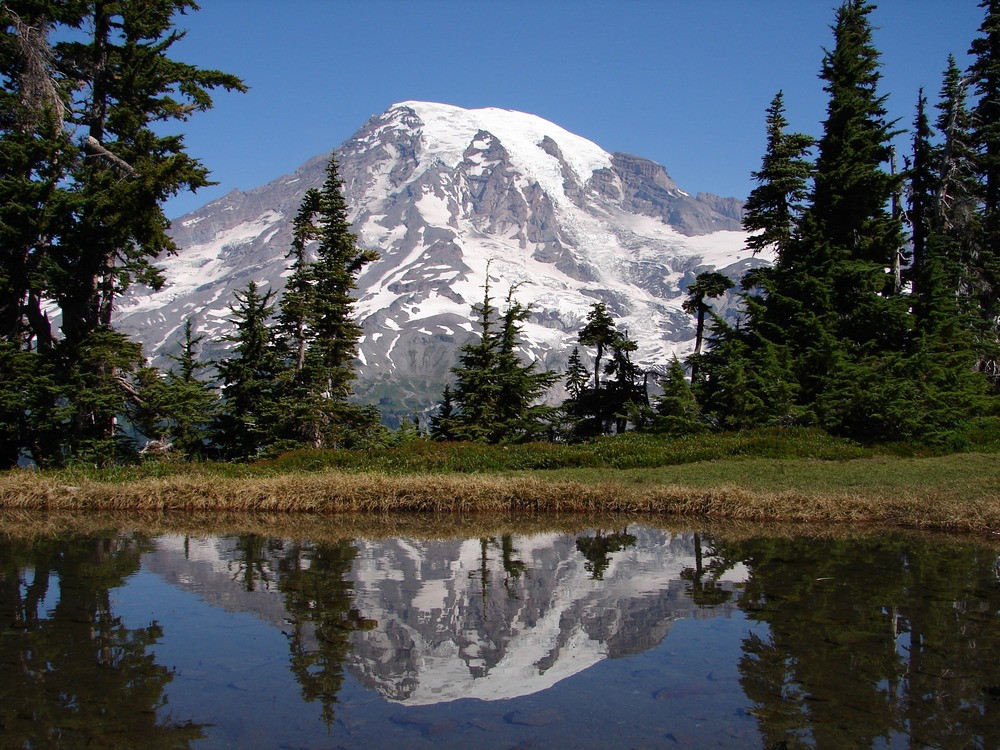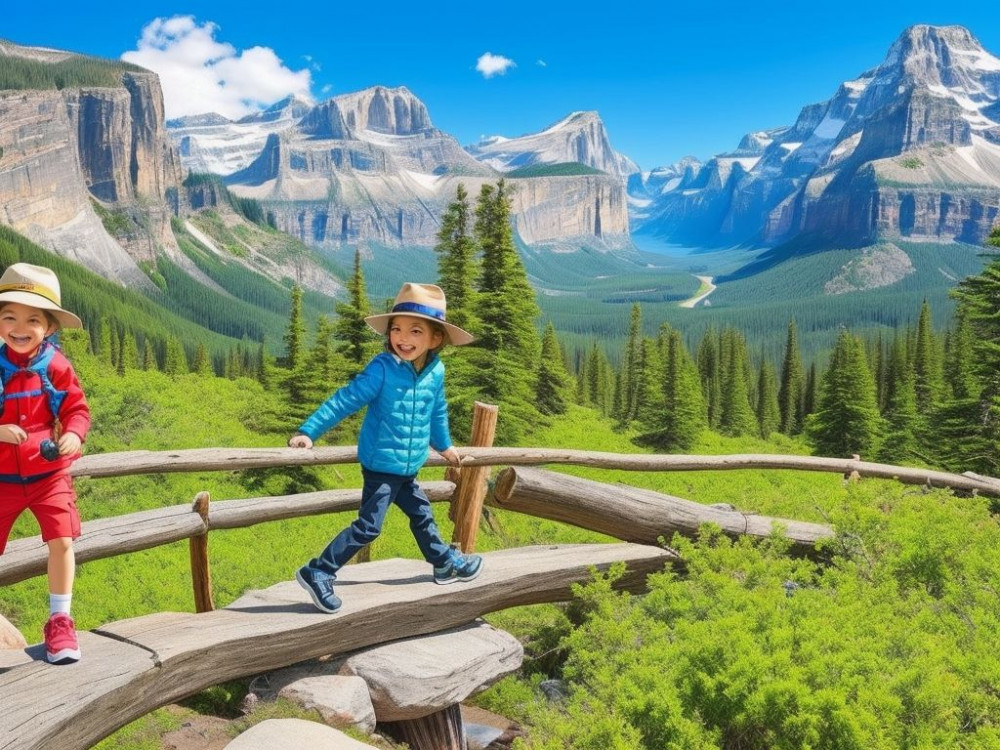Searching for a stunning outdoor adventure? Mount Rainier National Park is the place to go!
Its untouched nature and seemingly endless paths will leave you in awe.
From snowy mountain tops to flowery meadows, take some time to admire the magnificence of Mount Rainier!
Introduction
Mount Rainier National Park awaits you in Washington State! Approaching the park, you’ll be captivated by the snow-capped mountains and lush forests.
At 14,410 feet, the iconic Mount Rainier is a towering volcano that draws visitors from around the world.
Outdoor lovers, rejoice! You can explore diverse ecosystems while hiking trails through meadows of wildflowers. Or challenge yourself on one of the many accessible routes to summit the volcano.
Wildlife watchers will be delighted to spot elk, bears, and mountain goats.
And don’t forget the caves! Embark on a guided tour to explore the subterranean world beneath the surface.
Admire the intricate stalactites and stalagmites that decorate these mysterious formations.
Location and History
Mount Rainier National Park, located in Washington state, has a long and intertwined history with its majestic landscape.
This iconic park is home to the awe-inspiring Mount Rainier, an active volcano and highest peak in the Cascades range.
Adventurers, nature enthusiasts, and scientists have all come to uncover its hidden treasures.
The park’s history goes back to 1899, when it was established as America’s fifth national park.
It has served as a sanctuary for countless plant and animal species, providing them with a safe habitat to thrive.
Visitors can witness the unique flora and fauna covering 370 square miles of wilderness.
One of the unique features is its network of impressive glaciers.
These masses of ice are not only stunning, but also serve as laboratories for glaciologists studying climate change.
As global temperatures rise, these glaciers are indicators of our planet’s health.
The park also holds many stories of human triumphs and tragedies.
James Longmire, an early pioneer, discovered the healing properties of the park’s hot springs in the late 1800s.
He established Longmire Springs Resort, which marked the beginning of tourism in this pristine wilderness.
This captivating mix of history and natural beauty makes Mount Rainier National Park a must-visit destination.
Climb its snow-capped peaks or explore its lush forests to experience something unique.
Come discover all that Mount Rainier has to offer – a testament to Mother Nature’s wonders.
Geography

(Photo by NPS)
Mount Rainier National Park is located in Washington State.
It’s a stunning natural wonder with majestic peaks, lush forests and breathtaking glaciers.
The park is 369.3 square miles, and holds the highest mountain in Washington State at 14,410 feet.
Here you’ll find the Nisqually River and Carbon River, great for fishing and rafting.
Plus, 35 square miles of glaciers! They contribute to the park’s unique geography and provide fresh water for the delicate ecosystem.
The park is teeming with plant and animal life, such as Douglas firs and mountain goats, that have adapted to survive here.
Native American tribes have revered the mountain for thousands of years and believed it was home to powerful spirits.
In 1899, President William McKinley made Mount Rainier National Park the fifth national park in the US. It has since been a haven for nature-lovers, inspiring awe with its scenery and biodiversity.
But, be warned: Mother Nature likes to play a cruel joke—precipitation roulette!
Climate
The climate at Mount Rainier National Park is diverse. From snow-clad winters to mild summers, it’s an alluring place.
Winter brings heavy snowfall – around 53 feet – which makes it a great spot for winter sports.
Spring is marked by rain and wildflowers, with chilly temperatures.
Summer brings pleasant weather, perfect for hiking and camping, with temperatures ranging from 60-80 degrees Fahrenheit. Fall showcases vibrant foliage as the leaves change color, and days become shorter.
This park also has micro climates due to elevation and terrain variations, leading to diverse flora and fauna.
Native American tribes viewed this mountain as sacred, believing it was home to gods.
This reverence can still be seen in their cultural traditions and stories.
Mount Rainier National Park offers an immersive experience for nature lovers.
Step into its ever-changing climate and explore its rich history. Discover beauty and adventure all in one place.
Flora and Fauna
Mount Rainier National Park offers an amazing variety of plant and animal life. From bright wildflowers to majestic wildlife, this park has a huge array of flora and fauna.

The park has subalpine meadows, old-growth forests, alpine vegetation, and wildflowers. Also, elk, black bears, mountain goats, and marmots inhabit the area.
In addition, there are rare plants that have adapted to thrive in the mountain environment. This adds a special charm to the park’s already abundant ecosystem.
Moreover, the gray wolf population has been reintroduced in recent years – having been absent for decades – contributing to the park’s balance and vitality.
Forget the shrink – explore an ancient forest and you’ll feel better!
Ecosystem
The ecosystem of Mount Rainier National Park is worth exploring. It has diverse plants and animals that live in balance.
Here is a table showing its unique ecosystem:
| Ecosystem | Description |
|---|---|
| Alpine Meadows | Vast meadows with wildflowers and animals grazing |
| Old-Growth Forests | Tall trees with various birds and elusive mammals |
| Glacial Rivers | Clear rivers from the glaciers |
The park also has geological formations like cascading waterfalls and mountains.
A hiker once came across a black bear in an alpine meadow and took photos of it.
This shows that humans and wildlife can coexist in Mount Rainier National Park.
Conservation is important, but if the squirrels had opposable thumbs, they’d be driving Priuses!
Conservation

(Photo by NPS / Ivie Metzen) “Citizen Science Volunteers”
At Mount Rainier National Park, conservation focuses on protecting the natural ecosystem and wildlife.
Habitat restoration, invasive species removal, and sustainable tourism are all part of these efforts.
Local communities, government agencies, and non-profits work together to implement initiatives.
Education and outreach programs help visitors appreciate and respect the park’s environment.
Innovative strategies like citizen science projects involve volunteers collecting data.
This contributes valuable info for research and decision-making.
One successful conservation effort is the recovery of native mountain goats. In the early 1900s, hunting and habitat loss had nearly wiped them out.
But conservation initiatives like relocation and predator control have increased their numbers.
Mount Rainier National Park proves that conservation can keep our natural wonders safe.
With continued local support and visitor involvement, this majestic landscape will flourish for generations.
Recreation
Why go to Mount Rainier National Park when you could stay at home and watch a documentary?
Well, here are three unique ways to experience the natural beauty of this majestic park:
- Put on your hiking boots and explore the park’s extensive network of trails. Admire awe-inspiring sights and challenge yourself with invigorating activities.
- Camping enthusiasts, rejoice! Pitch your tent in serene wilderness and fall asleep to the soothing sounds of rustling leaves. Wake up to birdsong harmonizing with the dawn.
- Picnicking at Reflection Lakes is a feast for the eyes. Enjoy delicious bites while admiring the mirror-like water reflecting Mount Rainier’s grandeur.
Moreover, the park boasts over 200 named waterfalls – hidden gems waiting to be discovered.
To enhance your visit further:
- Get a map from the visitor center. This will guide you through trails and landmarks, ensuring you don’t miss any key attractions.
- Join a ranger-led program or guided tour. Learn about the park’s natural wonders from knowledgeable experts.
- Pack essential supplies such as sunscreen, insect repellent, and plenty of water. Weather conditions can change rapidly, so be prepared for any scenario.
Follow these suggestions and you’re guaranteed to have an unforgettable experience at Mount Rainier National Park.
Explore and create lifelong memories in this pristine wilderness.
Tourism
Visit Mount Rainier National Park for an amazing experience! Discover diverse ecosystems, take stunning hikes, and witness incredible glaciers.
Get close to wildlife, learn about the park’s history, and make unforgettable memories.
Start training now to be prepared for hiking with oxygen masks and hoverboards in the future!
Plan your trip now for an awesome adventure at Mount Rainier National Park.
Future
The future of Mount Rainier National Park is looking bright, with plenty of new developments!
There will be fresh trails created to explore untouched areas of the park, and facilities will be upgraded to boost comfort and convenience for visitors.
| Future Developments | Estimated Completion Date |
|---|---|
| New trails | 2022 |
| Facility upgrades | 2023 |
| Conservation initiatives | Ongoing |
Mount Rainier National Park is committed to protecting its natural beauty and its unique flora and fauna with conservation initiatives.
It was established in 1899, becoming the fifth national park in the United States. Since then, it’s been a haven for both recreational activities and science, drawing in millions of visitors yearly.
To sum up, we can look forward to fresh trails and improved facilities in the future of Mount Rainier National Park. With conservation efforts in place, it will remain preserved for future generations.
Its long history of over a hundred years proves our admiration for nature’s wonders.
FAQ
What is Mount Rainier National Park?
Mount Rainier National Park is a renowned national park located in the state of Washington. It encompasses Mount Rainier, a 14,410 feet tall stratovolcano and the highest mountain in the state.
How do I get to Mount Rainier National Park?
The park is accessible from several major cities in Washington. The most common route is via State Route 706, also known as the Paradise Road, which takes you to the popular Paradise area of the park.
What activities can I enjoy at Mount Rainier National Park?
The park offers a wide range of activities including hiking, camping, mountain climbing, wildlife viewing, snowshoeing, and skiing/snowboarding during the winter months. You can also explore the visitor centers and take scenic drives.
Are there any lodging options within the park?
Yes, Mount Rainier National Park offers various lodging options including campgrounds, historic inns, cabins, and guesthouses. Reservations are recommended, especially during peak seasons.
Can I bring my pet to Mount Rainier National Park?
While pets are allowed in certain areas of the park, they must be kept on a leash at all times and are not allowed on most trails. It is important to review the specific pet regulations before bringing your pet to the park.
Are there any entrance fees for visiting the park?
Yes, Mount Rainier National Park charges an entrance fee. The fee varies based on the type of vehicle and is valid for seven consecutive days. Annual passes and other special passes are also available for purchase.




Leave a Reply